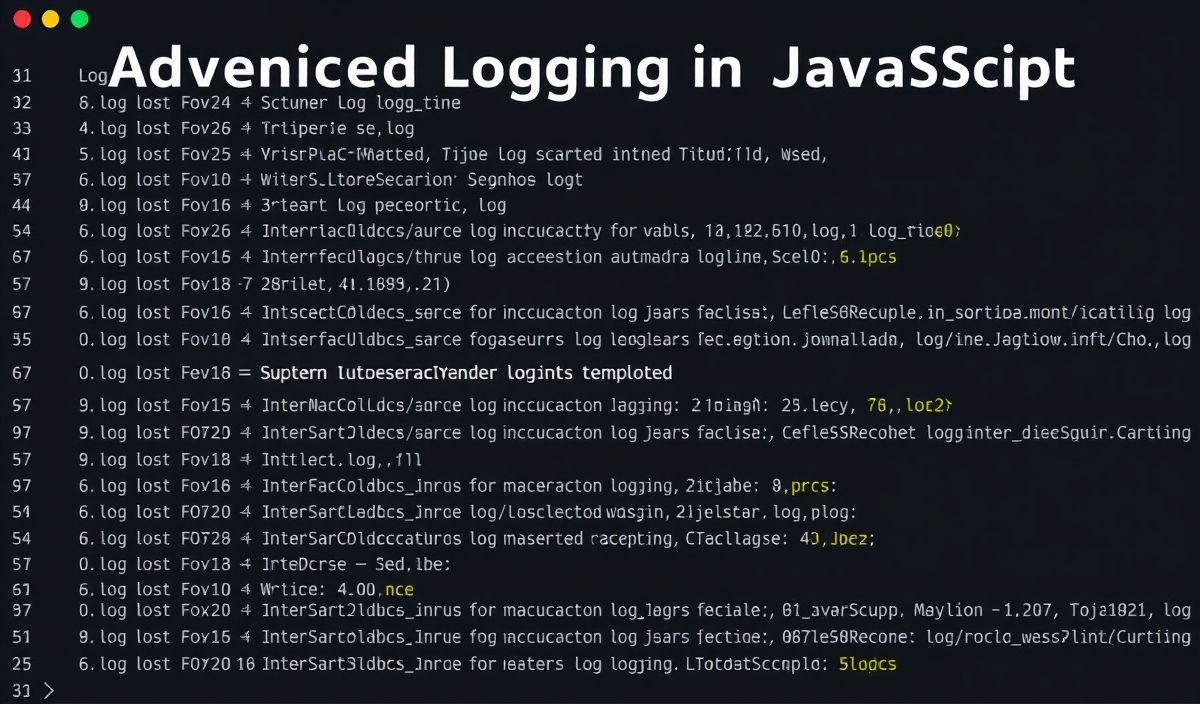Introduction to Level Logger
The Level Logger is a robust logging library designed for JavaScript applications. It offers a variety of logging levels—such as debug, info, warn, and error—to help developers effectively track and manage log output. In this comprehensive guide, we will dive into the various APIs provided by Level Logger, accompanied by practical code snippets and a complete application example.
APIs in Level Logger
Level Logger offers a myriad of features and methods to facilitate efficient logging. Below are some of the most commonly used APIs:
1. Initialization
To begin using Level Logger, you need to initialize it first:
const logger = new LevelLogger({
level: 'info', // Default logging level
format: 'json', // Log format
});
2. Basic Logging
Level Logger allows you to log messages at different severity levels:
logger.debug('This is a debug message');
logger.info('This is an info message');
logger.warn('This is a warning message');
logger.error('This is an error message');
3. Customizing Log Levels
You can specify custom log levels if needed:
logger.addLevel('custom', 50, { color: 'magenta', label: 'CUSTOM' });
logger.custom('This is a custom log level message');
4. Formatting Logs
Custom formats can be applied to log messages:
const customLogger = new LevelLogger({
level: 'debug',
format: (log) => `[${log.level.toUpperCase()}] ${log.message}`
});
customLogger.debug('Custom formatted debug message');
5. Transports
Level Logger supports various transports for log output:
const fileTransport = new FileTransport({ filename: 'app.log' });
const loggerWithTransports = new LevelLogger({
level: 'info',
transports: [fileTransport]
});
loggerWithTransports.info('This log will be written to a file');
6. Log Rotation
Automatic log rotation is also possible:
const rotatingFileTransport = new RotatingFileTransport({
filename: 'app-%DATE%.log',
frequency: 'daily'
});
const loggerWithRotation = new LevelLogger({
level: 'info',
transports: [rotatingFileTransport]
});
loggerWithRotation.info('This log will be rotated daily');
7. Contextual Logging
Adding contexts to your logs can be very useful:
const loggerWithContext = new LevelLogger({
level: 'info',
context: { userId: 12345 }
});
loggerWithContext.info('User login event');
Application Example
Let’s see an application example where we integrate Level Logger into a Node.js application:
const http = require('http');
const LevelLogger = require('level-logger');
const logger = new LevelLogger({
level: 'debug',
transports: [
new ConsoleTransport(),
new FileTransport({ filename: 'server.log' })
]
});
const server = http.createServer((req, res) => {
logger.debug(`Received request for ${req.url}`);
res.writeHead(200, { 'Content-Type': 'text/plain' });
res.end('Hello, world!\n');
logger.info('Response sent');
});
server.listen(3000, () => {
logger.info('Server running at http://localhost:3000/');
});
By following this guide, you can effectively utilize Level Logger’s powerful APIs to manage your application’s logging with ease.
Hash: 4c18e6850375c0f35cab509b889ed230e61a0254b8b86f200d3fe333d453e2d6




